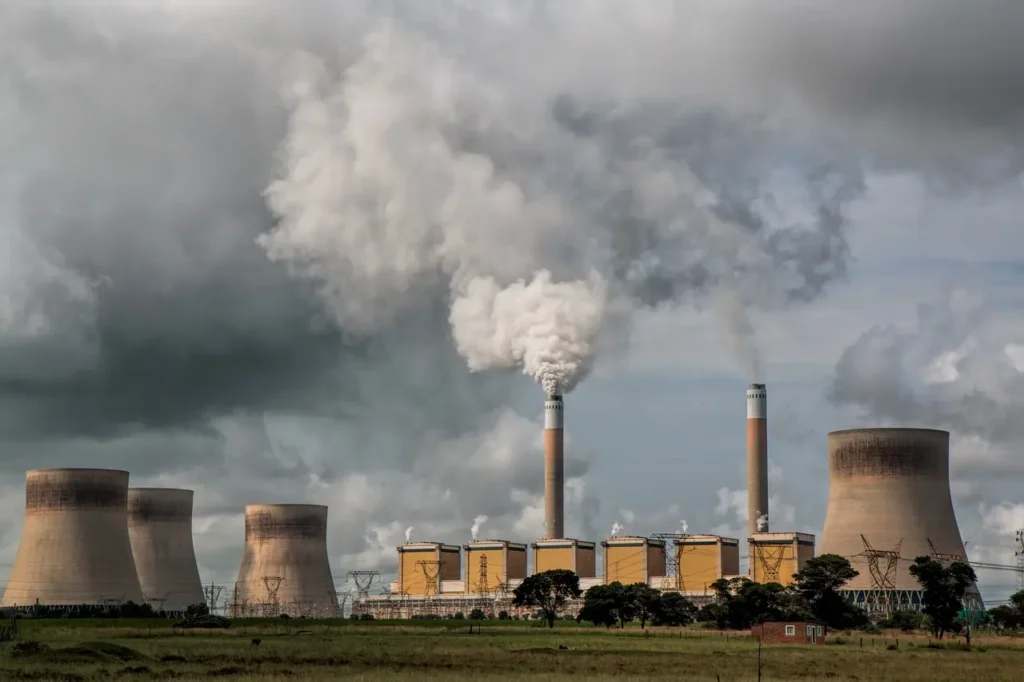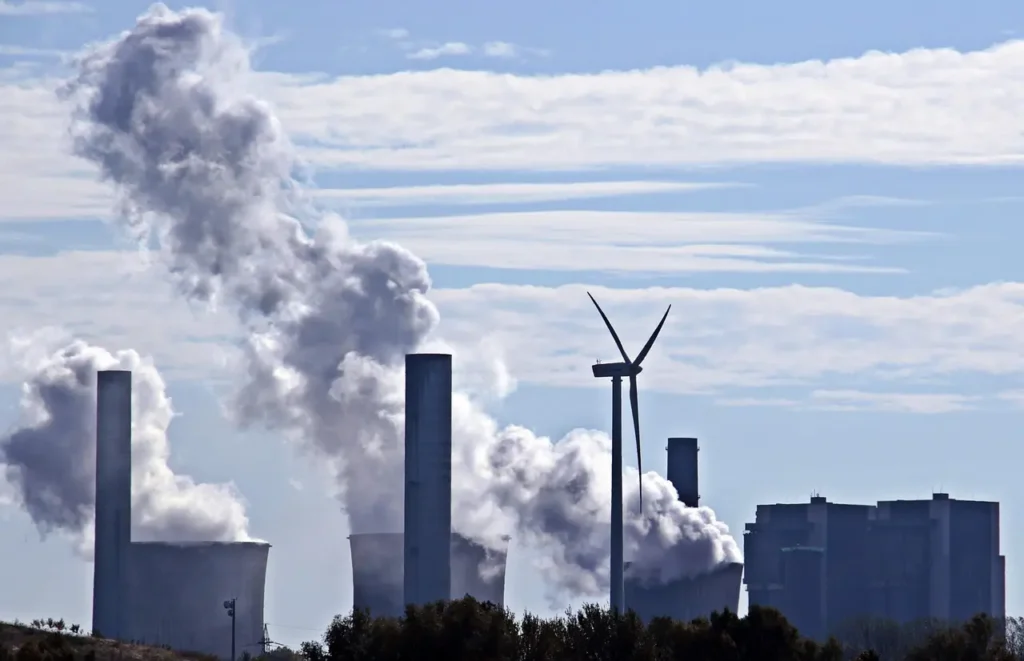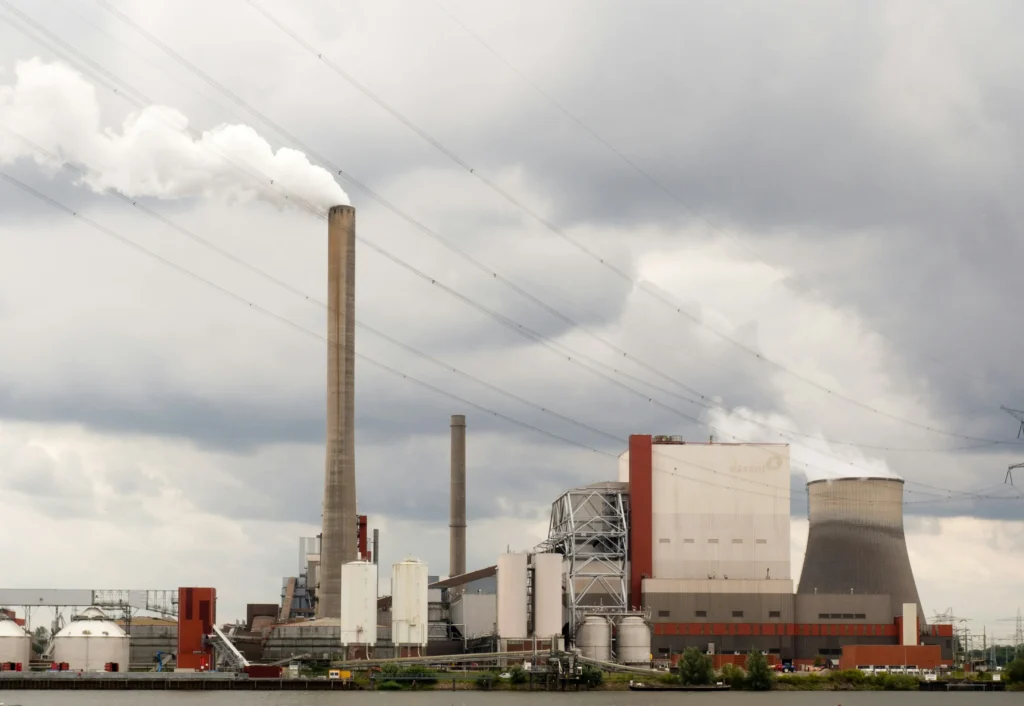
Environmental Impacts of Coal
Coal energy has powered industries for decades, but its environmental impact raises serious concerns
5 minute read • Last update May 2025

In this article
Coal has long been a cornerstone of global energy production, but it comes with significant environmental costs. From extraction to combustion, coal impacts air, water, and soil quality, contributes to greenhouse gas emissions, and poses health risks to communities.
How does coal impact the environment?
The environmental impacts of coal span its entire lifecycle:
- Extraction: Mining disturbs ecosystems, displaces wildlife, and damages landscapes.
- Transportation: Moving coal via rail or truck generates emissions and spills.
- Combustion: Burning coal releases large volumes of carbon dioxide (CO2), sulfur dioxide (SO₂), nitrogen oxides (NOₓ), particulate matter, and mercury.
- Waste: Coal ash, a byproduct of combustion, poses long-term contamination risks.
Coal’s combustion is one of the largest single sources of CO2 emissions globally, making it a key contributor to climate change. In addition to air pollution and carbon emissions, coal plants use significant amounts of water and degrade soil through waste disposal practices. These environmental challenges have prompted growing scrutiny and regulatory pressure.
Coal mining impact on the environment
Coal mining practices significantly impact both local and regional ecosystems, with effects that extend beyond the immediate mining area. The two primary methods of coal extraction—surface mining and underground mining—pose distinct environmental risks.
Surface mining, including techniques like mountaintop removal, involves stripping away vast areas of soil, vegetation, and rock to access coal seams. This process leads to large-scale deforestation, permanent landscape alteration, and the destruction of wildlife habitats. The removal of topsoil also reduces the land’s future agricultural potential and increases susceptibility to erosion.
Underground mining, while less visibly disruptive, can cause long-term geological instability. One common consequence is land subsidence, where the ground above mined-out areas sinks or collapses, damaging roads, homes, pipelines, and other infrastructure. Additionally, this disruption can alter groundwater flow patterns and affect the availability and quality of local water resources.
Both mining methods contribute to several key environmental issues:
- Land degradation: Large swaths of land become unusable due to erosion, soil compaction, and vegetation loss. This not only diminishes biodiversity but also undermines the land’s long-term productivity.
- Water contamination: Mining operations often expose heavy metals and harmful substances, such as arsenic, lead, and selenium, which can leach into nearby rivers, streams, and aquifers, posing health risks to humans and aquatic ecosystems.
- Acid mine drainage: When sulfide minerals in exposed rock react with water and oxygen, they produce sulfuric acid. This acidic runoff can severely lower the pH of surrounding water bodies, killing aquatic life and contaminating drinking water sources.
- Methane emissions: Coal seams contain methane, a greenhouse gas more than 25 times more effective than CO₂ at trapping heat in the atmosphere over a 100-year period. During mining, especially underground operations, this methane is often released into the air, contributing significantly to climate change.
Together, these impacts underscore the environmental cost of coal extraction and highlight the importance of mitigation practices and regulatory oversight.
Coal pollution and its consequences
Burning coal for electricity remains one of the most pollutant-intensive forms of power generation. Coal combustion releases a wide spectrum of harmful byproducts into the atmosphere, many of which have serious implications for both environmental and public health.
- Sulfur dioxide (SO₂): A major contributor to acid rain, SO₂ reacts with atmospheric moisture to form sulfuric acid. This acid deposition damages forests, soils, and aquatic ecosystems while also irritating the respiratory system in humans, particularly for those with asthma or other lung conditions.
- Nitrogen oxides (NOₓ): These compounds are key precursors to ground-level ozone and smog, which can aggravate respiratory diseases and reduce lung function. NOₓ emissions are also associated with environmental problems such as eutrophication, which leads to excessive nutrient buildup in water bodies and the collapse of aquatic ecosystems.
- Particulate matter (PM2.5): These fine particles are small enough to bypass the body’s natural respiratory defenses and embed deep in lung tissue. Long-term exposure to PM2.5 is linked to heart attacks, strokes, chronic bronchitis, and even premature death, especially among vulnerable populations like the elderly and children.
- Mercury: When coal is burned, mercury is released into the air and eventually settles into water bodies, where it is converted into methylmercury—a toxic compound that bioaccumulates in fish. Consuming mercury-contaminated seafood can impair neurological development in fetuses and young children and pose cardiovascular risks to adults.
Compared to coal, natural gas combustion produces significantly lower levels of SO₂, mercury, and particulate matter, making it a comparatively cleaner-burning fossil fuel. Beyond air pollution, coal combustion generates significant solid waste in the form of coal ash—a byproduct containing concentrated levels of heavy metals such as arsenic, lead, cadmium, and chromium. Often stored in unlined surface impoundments or landfills, coal ash poses a serious risk of leaching into groundwater, contaminating drinking water supplies and adjacent ecosystems.
These environmental hazards disproportionately affect low-income communities and communities of color, many of whom live near coal-fired power plants and waste storage sites. This raises substantial environmental justice concerns, as these populations often bear the brunt of pollution-related health problems while having the least access to mitigation resources or political recourse.
Comparing the environmental impacts of coal to other fossil fuels
Among fossil fuels, coal has the highest carbon intensity. Compared to natural gas, coal:
- Emits more than twice as much CO₂ per kilowatt-hour of electricity generated
- Produces greater quantities of SO₂, NOₓ, and particulate matter
- Has lower thermal efficiency due to its energy density
While all fossil fuels contribute to climate change, coal remains the most environmentally damaging. The challenge lies in transitioning infrastructure and investment away from coal toward cleaner alternatives. Learn more about the broader context in Running out of fossil fuels.
Are all types of coal equally harmful?
Not all types of coal are the same—their environmental impact varies by type, based on carbon content, energy output, and pollutant levels. The main categories include anthracite, bituminous, sub-bituminous, and lignite.
Higher-grade coals like anthracite and bituminous have higher energy content and burn more efficiently but still produce significant emissions. In contrast, lower-grade coals such as sub-bituminous and lignite are more abundant and cheaper but generate more pollution per unit of energy due to higher moisture content and lower carbon density.
Texas, for example, relies heavily on lignite and imported sub-bituminous coal, both of which contribute to higher localized emissions and environmental degradation.oal.
Is coal energy sustainable in the long term?
Coal is under increasing scrutiny as the world accelerates the transition to a lower-carbon energy future. Several indicators suggest that coal is not a viable long-term energy solution:
- Global retirements: Many nations are actively decommissioning coal-fired power plants in response to climate targets and stricter environmental regulations.
- U.S. trends: In the United States, plant retirements continue to outpace new builds as utilities shift toward natural gas and renewable energy sources.
- Carbon capture and storage (CCS): Although CCS technologies offer theoretical promise for reducing emissions, they remain prohibitively expensive and are not yet widely deployed at scale.
- Cost burden: Coal is becoming less economically competitive compared to solar, wind, and natural gas, which benefit from falling technology costs and regulatory support.
These trends reflect coal’s declining role in a decarbonizing global energy market and raise serious doubts about its long-term sustainability.
Toward a cleaner grid: What’s next after coal?
With coal’s environmental drawbacks clear, attention turns to what comes next. The energy transition is driven by:
- Regulatory mandates: Emissions standards and climate policies are accelerating plant retirements.
- Investment trends: Capital increasingly flows toward solar, wind, and natural gas.
- Transitional fuels: Natural gas serves as a bridge fuel, helping to stabilize the grid while reducing emissions.
At BKV Energy, we support the shift to a more sustainable energy future. We believe in equipping consumers with transparent, science-backed information so they can make informed choices about their energy use.
Written by Graham Lumley
Graham Lumley, Digital Marketing Manager at BKV Energy, leads digital and traditional marketing strategies, focusing on educating Texans about the state's deregulated energy market. With over 8 years of marketing experience, he creates content to help consumers understand and save on their energy bills, bringing a fresh and dynamic approach to the industry.
Related articles

Is Coal Renewable?
3 minute readCoal is a natural energy source that has played a crucial role in powering human development for centuries. It forms
Get $50 off your electric bill!
Use code BKVEJOINUS50
Enter your zip code to shop BKV Energy's affordable, fixed-rate Texas electricity plans. Use the promo code for $50 off your electric bill.
